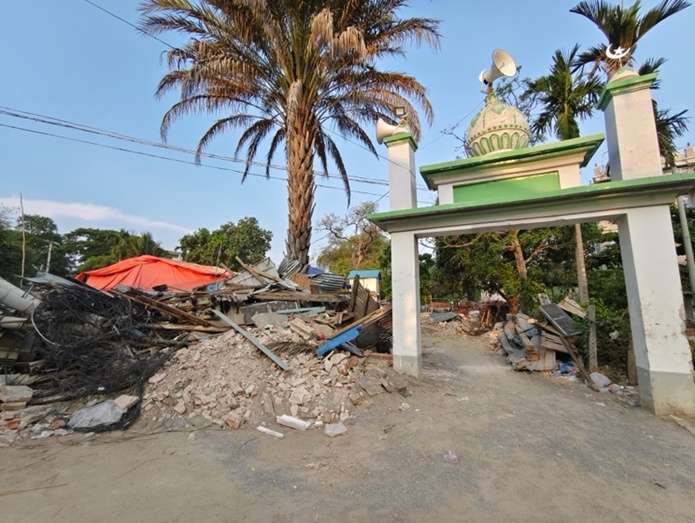MUHAMMADIYAH.OR.ID, MYANMAR – Hundreds of Muslims were affected by the powerful earthquake that struck Myanmar on March 28. The 7.7-magnitude quake caused severe damage to more than 50 mosques in several areas of the country.
In response, Muhammadiyah sent a humanitarian team to provide aid to those impacted. The team is made up of volunteers from Muhammadiyah Aid, the Muhammadiyah Disaster Management Center (MDMC), and Lazismu (the Muhammadiyah Charity Management). Their mission began on April 25 and will continue until May 7, 2025.
The team, led by coordinator Syahri Ramadhan, along with Dwi Kurniawan for media and documentation, and Satriyo handling logistics, reported on May 1 that aid from Indonesian people had been successfully distributed to those in need.
As part of their mission, the team visited several damaged mosques to assess their condition. One of them was Thar Lay Saw Ang Mosque in Amarapura, Mandalay. According to the mosque’s imam, Mohammad Utsman (35), the building is no longer safe to use.
“It needs to be demolished and rebuilt,” Utsman told the Muhammadiyah Aid team during their visit to Mandalay, Myanmar’s second largest city.
Utsman, who has served as imam since 2021, said rebuilding the mosque would require a large amount of funding. Local fundraising has started, and one foundation has offered support, but the total is still insufficient.
“Looking at the current situation, we still need more support to fully rebuild it,” he added.
For now, worship activities have been moved to a nearby school usually used by a school and Quran learning center for local Muslim children. During this emergency, with the school closed, some community members in emergency shelters are using it as a prayer space.
The Muhammadiyah team also visited Ulin Mosque in Sagaing, another area hit hard by the earthquake. A survivor, Anas shared that during the first tremor, the mosque was still standing, but it collapsed during a second shock.
“Fifty people died when the building came down,” told Anas.
Now, only the mosque’s front gate remains. Everything has been destroyed. Worshippers have built a temporary bamboo and tarp structure on top of the mosque’s original floor, which is still usable. However, the ablution area and toilets were also destroyed.
As of May 2, the Muhammadiyah Aid and MDMC team reported that they had assessed damage at 15 mosques and held discussions with leaders at five of them, according to team coordinator Syahri Ramadhan.











